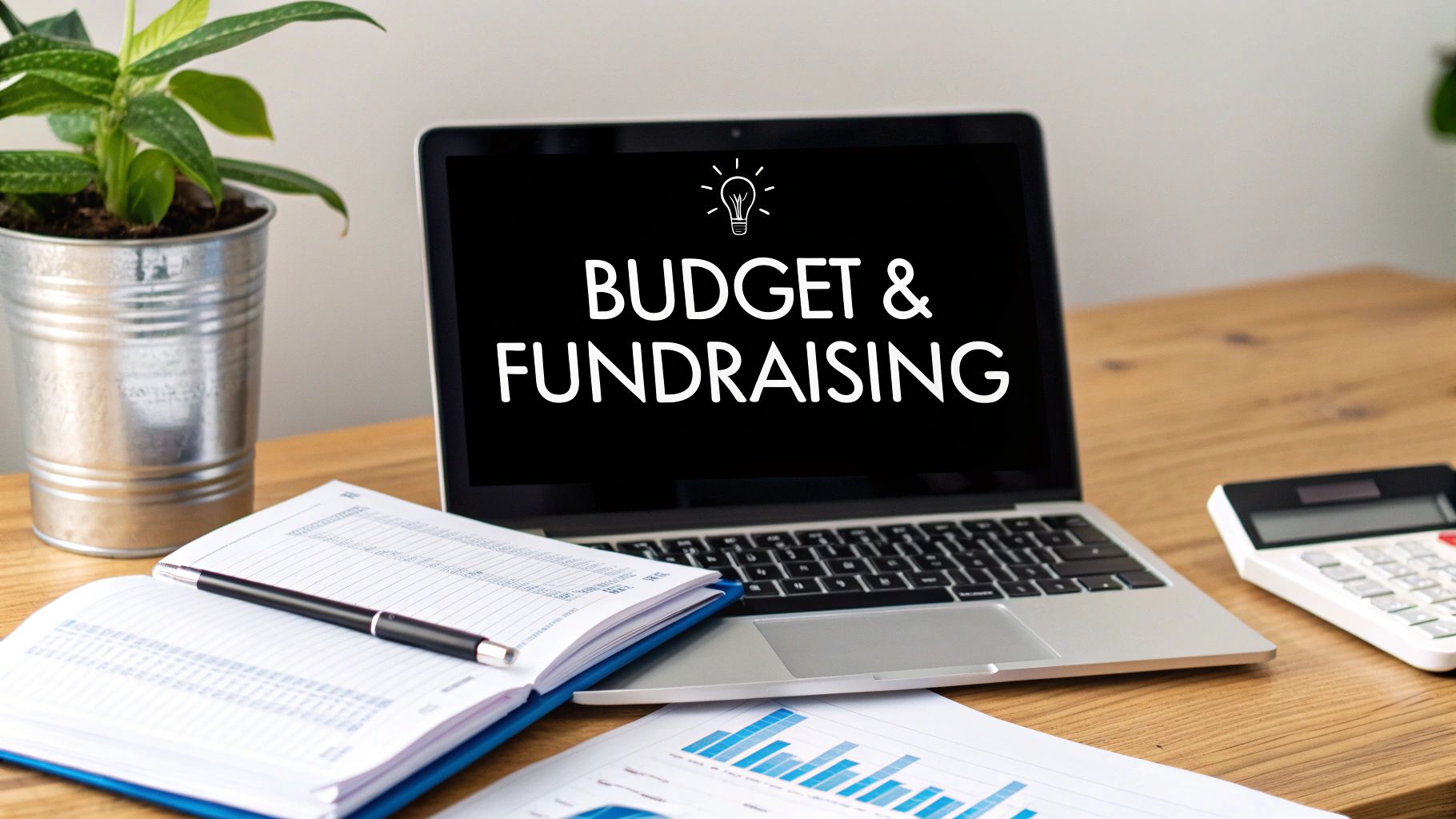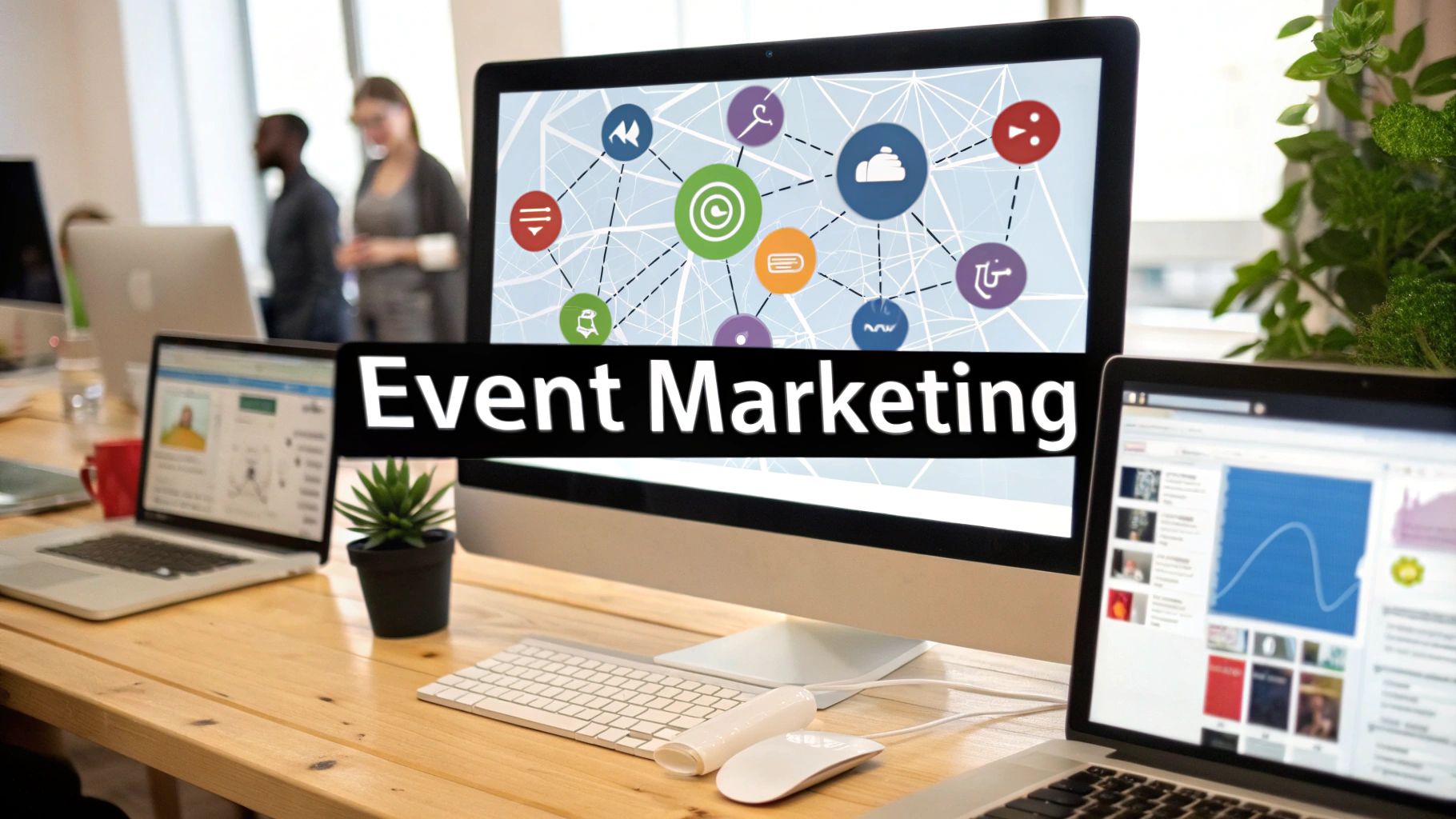The Changing Landscape of Nonprofit Event Planning

Nonprofit event planning has become increasingly sophisticated. Events are no longer simply about fundraising dinners. They now encompass cultivating relationships, raising awareness, and creating a tangible impact for the cause. This requires nonprofits to adapt to a more strategic approach to event management.
One key element of this shift is the emergence of diverse event formats. Smaller, more intimate gatherings foster personalized connections with major donors. Larger galas, on the other hand, can generate significant public attention.
The growing popularity of hybrid events offers organizations a way to connect with wider audiences, both locally and internationally. This multifaceted approach allows nonprofits to tailor their strategies to specific goals and expand their reach.
Growth and Expansion of the Event Management Industry
The event management industry, which includes nonprofit event planning, is experiencing significant growth. The global market was valued at approximately USD 936.14 billion in 2023. Projections indicate it will reach nearly USD 1.76 trillion by 2029, with a CAGR of 11.06%. This expansion highlights the increasing importance of strategic planning and execution within the nonprofit sector. For a deeper dive into these statistics, Explore this topic further.
Embracing Technology and Measurable Outcomes
Technological advancements are a driving force behind this industry growth. The rise of virtual and hybrid event platforms like Zoom has simplified and made it more cost-effective for nonprofits to engage with supporters globally. These platforms also provide valuable data insights, allowing organizations to monitor event performance and demonstrate a clear return on investment (ROI).
Simply implementing technology isn't sufficient. Nonprofits must prioritize measurable outcomes aligned with their overall mission. This involves establishing clear objectives, tracking key performance indicators (KPIs), and using data analysis to refine future event strategies.
Balancing Mission and Financial Constraints
Successful nonprofit event planning requires careful balancing. Organizations must create impactful experiences while working within often-limited budgets. This necessitates exploring cost-effective strategies, such as utilizing in-kind donations and volunteer support. This resourcefulness is essential for achieving mission fulfillment while maintaining financial stability.
By adapting to these evolving trends, nonprofits can leverage their events to create positive change, cultivate stronger relationships, and drive lasting impact for their cause.
Crafting Event Objectives That Drive Real Impact

Impactful nonprofit event planning begins with defining clear, measurable objectives, moving beyond vague aspirations like "raising awareness." These objectives should inform every decision, from venue selection to invitation design. Successful events are built upon a solid framework of well-defined goals.
Setting SMART Goals for Nonprofit Events
A common mistake in planning nonprofit events is setting ambiguous goals. Instead of aiming for broad outcomes, concentrate on developing SMART goals: Specific, Measurable, Achievable, Relevant, and Time-bound.
For instance, rather than simply "increasing donations," a SMART goal could be "increasing online donations by 15% within three months of the event." This specific target allows for accurate progress tracking and provides a tangible objective.
Furthermore, consider the different types of objectives your event might address. These could include fundraising targets, acquiring new donors, recruiting volunteers, or engaging the community. Balancing these multiple objectives requires careful planning and consideration of their contribution to your overall mission.
Aligning Your Team Around Shared Objectives
Once your objectives are defined, it’s crucial to align your team around these shared goals. Practical worksheets and regular communication help ensure everyone understands their role in achieving the event's purpose.
This shared understanding empowers team members and promotes a sense of collective ownership. However, competing priorities can surface during the planning process. Regular check-ins and open communication are essential to maintaining focus on the core objectives.
Developing a Framework for Event Objectives
To maximize the impact of your objectives, organize them within a structured framework. This framework might include categories like fundraising, marketing, and community engagement, each with specific metrics and considerations. This comprehensive approach provides a clear view of the event’s potential impact.
To help you create a framework that suits your specific event needs, the following table provides a structured approach to setting various event objectives and their corresponding metrics.
Nonprofit Event Objectives Framework: A structured approach to setting and prioritizing different types of event objectives
| Objective Type | Examples | Key Metrics | Planning Considerations |
|---|---|---|---|
| Fundraising | Secure $50,000 in sponsorships | Number of sponsors, Sponsorship dollar amounts | Research potential sponsors, Develop compelling sponsorship packages |
| Donor Acquisition | Gain 100 new recurring donors | Number of new recurring donors, Average donation amount | Implement an online donation platform, Offer incentives for recurring donations |
| Volunteer Recruitment | Recruit 25 new volunteers | Number of volunteer applications, Number of volunteers attending training | Promote volunteer opportunities, Host a volunteer information session |
This framework helps visualize how different objectives contribute to the overall success of the event, allowing you to track progress and measure impact effectively.
By setting SMART goals, aligning your team, and using a structured framework, your nonprofit event can achieve tangible results directly supporting your mission. This strategic approach to objective-setting transforms your planning process, enabling you to make informed decisions about every aspect of your event, ensuring its lasting impact. These strategies are essential in the competitive landscape of nonprofit fundraising.
Building Event Budgets That Maximize Mission Impact

Nonprofit event planning requires a careful balancing act. Creating meaningful experiences that resonate with donors while adhering to budget constraints presents a significant challenge. Successful organizations, however, understand the strategic allocation of resources for maximum mission impact. This involves careful consideration of all expenses, both apparent and those less obvious.
Developing Comprehensive Budgets
A well-structured budget is the cornerstone of any successful event. Accounting for all potential costs is essential. This includes readily apparent expenses such as venue rental and catering.
It's equally important, however, to factor in less obvious costs. These can include marketing materials and staff time. Overlooking these seemingly smaller expenses can significantly impact your overall budget.
For example, while the venue might represent a substantial expense, don't underestimate the cumulative effect of smaller costs. Items like printing invitations, securing necessary permits, or arranging guest transportation can quickly add up. A truly comprehensive budget anticipates and accounts for these less obvious expenses.
Additionally, ensure your budget aligns with the event's objectives. If donor acquisition is the primary goal, allocate more resources to outreach and follow-up communication. For events centered on community building, invest in engaging activities and enriching experiences for attendees.
Strategies for Cost Reduction
Nonprofits often work with limited resources, making cost reduction strategies critical. Strategic partnerships offer an excellent avenue for achieving this. Collaborating with local businesses can yield in-kind donations or discounted services, providing access to resources that might otherwise be unaffordable.
Volunteer engagement can also significantly reduce staffing costs. Volunteers can assist with a variety of tasks, from event setup and logistics to guest registration. This reduces reliance on paid staff, freeing up budget allocation for other essential expenses.
Nonprofit event planning statistics highlight both the challenges and opportunities in measuring impact. Despite increased investment in events, only 23% of companies, including nonprofits, effectively track event ROI. Find more detailed statistics here. This underscores the need for more robust, data-driven decision-making within the sector.
Budget Tracking and Analysis
Tracking expenses throughout the planning process is crucial for maintaining control and staying within budget. Utilizing spreadsheets or budgeting software like YNAB or Mint to monitor all transactions and compare them against initial projections is highly recommended. This proactive approach helps identify potential overspending early on, allowing for timely adjustments.
Post-event financial analysis also offers valuable insights for future planning cycles. Analyzing where your budget performed well and where it fell short informs and refines future strategies. This data-driven approach to event planning ensures resources are consistently maximized for the greatest possible mission impact.
Scaling your budgeting approach according to organizational size is also key. Smaller organizations may find simple spreadsheets sufficient, while larger organizations may require more sophisticated software solutions. Tailor your approach to your specific needs and resources.
By incorporating these strategies, nonprofits can ensure their events are not only memorable experiences but also financially sustainable, effectively contributing to their overarching mission. This careful financial stewardship allows for continued growth and impactful community engagement.
Assembling an Event Team That Delivers Results

A successful nonprofit event relies heavily on a well-structured team. This means individuals with the right skills collaborating effectively. This section explores building such a team, regardless of your organization's size. Whether grassroots or well-established, the principles remain consistent.
Identifying Essential Roles
The first step in planning a nonprofit event is identifying key roles. These often include a Project Manager to oversee everything, a Fundraising Coordinator to manage donations and sponsorships, a Marketing and Communications Manager to promote the event, and a Logistics Coordinator for venue, catering, and other arrangements.
For smaller nonprofits, one person may handle multiple roles. As your organization grows, however, delegating specific responsibilities becomes crucial. This division of labor allows for specialization and boosts efficiency.
Recruiting and Managing Your Team
Recruiting the right people is as crucial as defining the roles. Look for individuals passionate about your cause with the necessary skills and experience. For instance, a strong marketing manager might have a background in social media management and content creation.
Managing a diverse team of staff, board members, and volunteers presents unique challenges. Clear communication and defined roles and responsibilities are paramount. Regular team meetings can address challenges and foster a shared purpose.
This growth in specialized roles mirrors broader industry trends. The U.S. Bureau of Labor Statistics projects 7% employment growth for meeting, convention, and event planners from 2023 to 2033. Learn more about event planning career trends here. This translates to increased access to skilled professionals.
Effective Delegation and Communication
Effective delegation empowers team members to take ownership and contribute their strengths. Clearly outlining expectations and providing necessary resources sets everyone up for success. Regular check-ins monitor progress and address roadblocks.
Communication is essential for smooth event planning. Establish clear communication protocols from the start. This includes preferred channels (email, project management software), update frequency, and designated contacts for different aspects. This prevents misunderstandings and ensures efficient information flow.
Conflict Resolution
Conflict is inevitable in any team, especially under the pressure of event planning. Establishing a conflict resolution framework is vital. This might involve designated mediators or procedures for addressing disagreements constructively. The goal is swift, fair resolution, minimizing disruptions.
By focusing on clear roles, effective communication, and proactive conflict resolution, you build a high-performing team. This teamwork leads to a smoother, more successful event, ultimately furthering your nonprofit's mission.
Tech Tools That Transform Nonprofit Events
Technology is essential for modern nonprofit event planning, moving far beyond simple registration. Organizations are using tech to improve event experiences and streamline operations. Choosing the right tools, from donor management systems to virtual event platforms, can significantly impact your success.
Donor Management Systems for Enhanced Relationships
Donor management systems like Bloomerang and DonorPerfect are invaluable for nonprofits. These systems provide tools for tracking donations, segmenting donors, and generating insightful reports. This data enables personalized communication, strengthening donor relationships and boosting fundraising efforts. For example, segmenting donors based on giving history allows tailored communication, improving engagement and fostering long-term support.
Virtual Platforms Expanding Reach
Virtual event platforms like Whova and Hopin help nonprofits expand their reach. These platforms allow organizations to host online events, webinars, and hybrid events, connecting with a global audience. Features such as live streaming, interactive sessions, and virtual networking create engaging experiences, regardless of location. This is especially helpful for organizations with limited geographical reach or those wanting to include a diverse audience.
Free vs. Paid: Choosing the Right Tools
Nonprofits must consider their budget when selecting tech tools. While paid options offer advanced features and support, free and low-cost alternatives are available. Google for Nonprofits offers free access to tools like Google Workspace, invaluable for team collaboration and communication. Finding the right technology involves balancing your needs with available resources. Evaluate free and paid options, prioritizing solutions that deliver the most value for your specific objectives. The most expensive option isn't always the best. Carefully assess your needs and choose tools aligned with your budget and goals.
To help you choose the right tools, we've created a comparison table outlining the various technology categories, budget options, key features, and potential ROI.
Before we dive into the table, it's important to note that implementation complexity can vary significantly. While some platforms offer easy setup and intuitive interfaces, others may require more technical expertise or dedicated training.
Nonprofit Event Technology Comparison: Evaluation of various technology platforms for different aspects of nonprofit event planning
| Technology Category | Budget Options | Key Features | Implementation Complexity | ROI Potential |
|---|---|---|---|---|
| Donor Management Systems (Bloomerang, DonorPerfect) | Free trials, tiered monthly/annual subscriptions | Donation tracking, donor segmentation, reporting, communication tools | Moderate | High (improved fundraising, stronger donor relationships) |
| Virtual Event Platforms (Whova, Hopin) | Free tiers, tiered monthly/annual subscriptions based on features and attendee capacity | Live streaming, interactive sessions, virtual networking, event registration | Moderate to High | High (expanded reach, increased engagement) |
| Collaboration & Communication (Google for Nonprofits) | Free for eligible nonprofits | Email, document sharing, video conferencing, shared calendars | Low | High (improved team efficiency, reduced communication costs) |
| Event Management Software (Eventbrite) | Free & paid options based on features & ticket sales | Event registration, ticketing, website creation, marketing tools | Low to Moderate | Moderate (streamlined logistics, increased efficiency) |
This table highlights the diverse range of technology solutions available to nonprofits, each offering unique features and benefits. Remember to carefully consider your organization’s specific needs and resources when making your selection.
Streamlining Operations with Event Management Software
Event management software simplifies event logistics. Platforms like Eventbrite offer tools for registration, ticketing, and website creation. This centralized system improves efficiency by streamlining tasks and automating processes.
Training and Implementation
Effective technology implementation requires training. Provide your team and volunteers with resources and support so they can comfortably use the chosen tools. This is especially important for volunteers who may have different levels of technical proficiency. Simple training materials and designated support can significantly improve adoption rates.
Capturing Donor Insights for Ongoing Engagement
Technology can help nonprofits build lasting donor relationships after the event. Event platforms and donor management systems collect valuable data on donor preferences and interactions. This data can personalize follow-up communication and tailor future engagement strategies, strengthening connections and fostering long-term support. Using the right technology can transform nonprofit events into highly impactful experiences, enhancing donor relationships, expanding reach, and driving meaningful support. Strategic technology use is essential in today's nonprofit environment.
Creating Event Promotion That Actually Drives Attendance
Generic social media posts just don't cut it anymore when it comes to driving event attendance. To truly maximize participation, especially for non-profit events, you need a strategic approach that goes beyond the basics. This means understanding your audience and crafting messages that resonate. Let's explore how to make your next event a success.
Crafting Compelling Event Messaging
Effective event promotion hinges on compelling messaging. Your message needs to strike a balance between emotional appeal and tangible benefits. Think of it this way: the emotional appeal answers the "why" – why your cause is important. The tangible benefit answers the "what's in it for me?" – what attendees gain by attending.
For example, if your event focuses on animal welfare, highlight the impact of supporting local shelters and rescuing animals (the "why"). Then, showcase opportunities for attendees to meet adoptable pets, learn about animal care, and connect with fellow animal lovers (the "what's in it for me?").
Multi-Channel Approach for Targeted Outreach
Different audience segments require different outreach strategies. Long-time supporters may respond well to email newsletters and personal invitations. However, reaching a new audience may require leveraging social media platforms like Facebook and Instagram or exploring targeted advertising. The key is to deliver the right message through the right channel at the right time.
Budget-Friendly Tactics for Maximum Impact
Limited budgets don't have to limit your reach. Activate your volunteer network to spread the word organically within their communities. Explore partnerships with local businesses or other organizations for cross-promotional opportunities. Don't forget the power of local media. A well-crafted press release can generate significant coverage and boost event visibility.
Developing Timeline-Based Promotional Plans
Effective promotion requires a structured timeline. Start building awareness well in advance of your event. Then, as the date draws closer, shift your focus from general awareness to ticket sales. Create a sense of urgency to encourage registrations. This strategic pacing keeps your audience engaged throughout the promotional cycle.
Measuring Campaign Effectiveness and Making Adjustments
Data-driven decision making is essential for successful event promotion. Track key metrics such as website traffic, social media engagement, and ticket sales. These insights reveal what's working and what needs adjustment. For example, if your social media engagement is low, try experimenting with different content formats or posting times. Continuously optimizing your campaign based on real-time data is key to achieving your attendance goals.
For an exceptional event experience, consider enhancing your event with professional services. 1021 Events offers DJ/MC services, uplighting, sound systems, and videography, specializing in transforming special occasions into lasting memories.




